
Buy Persian Persian Handicrafts at: www.persianhandicrafts.com
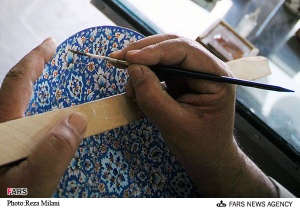
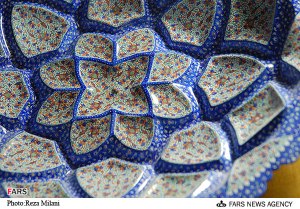 Persia has been a center of civilization for at least 7000 years. Iran art as one of the richest art heritages in the world history and encompasses many disciplines including Calico (Ghalamkar) ,Gerehchini ,Making National Musical Instruments of Iran (Tar & Setar) ,Silverwork, Woodcarving ,Engraving (Ghalamzani) , Inlaid work ,Miniature, Tile working, Writing and calligraphy and pottery. Iranians were among the first nations who use geometry, astronomy and mathematics in architecture and have wonderful skills in making massive domes and you still can visit in the structure of bazaars and mosques.
Persia has been a center of civilization for at least 7000 years. Iran art as one of the richest art heritages in the world history and encompasses many disciplines including Calico (Ghalamkar) ,Gerehchini ,Making National Musical Instruments of Iran (Tar & Setar) ,Silverwork, Woodcarving ,Engraving (Ghalamzani) , Inlaid work ,Miniature, Tile working, Writing and calligraphy and pottery. Iranians were among the first nations who use geometry, astronomy and mathematics in architecture and have wonderful skills in making massive domes and you still can visit in the structure of bazaars and mosques.
Here is a brief list of Iranian art and handicraft:
- Calico (Ghalamkar)
- Engraving (Ghalamzani)
- Gerehchini
- Inlaid work
- (Khatam)
- Making National Musical Instruments of Iran (Tar & Setar)
- Miniature (Negargari; the Iranian drowning) and illuminating-tazhib)
- Persian painting
- Silverwork
- Tile working
- Woodcarving
- Writing and calligraphy
- Calico (Ghalamkar)
This sort of cloth is prepared of pure cotton. In the spinning and weaving factories, cotton turns into twofold string number 20.This sort of cloth is made in different widths; from 30 to 220 centimeters, in huge global shapes. They are then taken to the calico working places to be cut into various lengths according to their type and quality.
The cloth, having been cut into suitable pieces, are delivered to ladies in order that their margin strings are spun into thicker ones. Then they are taken back to the working place.
A brief summary of calico history:
The oldest sample of calico has been attained from the figures on the walls of Egyptian tombs 2000 BG. The archeological reports also indicate that some calico samples have been attained from the tombs of the Sakka brothers be-longing to four centuries be. The oldest samples are some molds like that of calico whose precedence is the same as those calicoes discovered in the Sakka tombs in Egypt The most ancient calico molds discovered In Iran Include three stone moldsandsomeclaydishesbelongingtothe4-5ADarnonq whose shapes there have been discovered some fluffs of wool. The an of calico making flourished in Isfahan, Hamedan and Yazd in the Seljuk period getting to its nourish pick in the Safavid dynasty which led to creating new designations. During the Qajar period, and by the attempts bestowed by Amir Kabir, this art again flourished. Unfortunately, this art gal an unprecedented stagnation during the worth wars (I) and (II) until it was about 10 be destroyed forever. However, by the efforts of a few of the artists It was flourished again and delivered to the new generation .Fortunately, at the present time calico working is getting nourished more and more in Isfahan.
· Engraving (Ghalamzani)
The artistic works of this course made by the artist are the glorious and undeniable Indications of previous metal work of Iran and Isfahan, in particular .The historical discoveries belonging to the ancient times as the Sassanid (700 AD),the Seljuk (1000 AD) and the Safavid (1600 AD) dynasties Indicate a few of the outstanding metal Work periods. Resuming this art is due to the diligent at tempts of the Late Ostad Mohammad Oreizi and he Late Ostad Mohammad Taghi Zufann during the past eighty years, which has been led to creating tens of outstanding and distinguished metal engravings on the one hand and training the new generation on the other. And Producing golden and silver-like goblets and materials of some metals as nickel Silver and copper in particular Meanwhile engraving with various plans and methods have been led to the highest amount of engraving production.
Gerehchini
Gerehchini is an art to create beauty with wood and glass. It is making and beautifying surfaces with a complex of geometrical figures with colored glasses, wooden pieces of Mo-arragh art, inlaid mirrors shaped with glasscutters which in the end will create a similar, symmetrical and balanced job. The purpose of this art is 10 stimulate feeling and enjoyment; therefore it is a figured enjoyment while art is defined as observing and realizing beauties and expressing them in a pleasant way as Gerehchini is the art to create beauties with fragile and cut pieces of wood and glasses in various figures geometrical and unification seeking which are settled repeatedly beside each other in a frame. The most important materials applied 10 this art are: Different sorts of wood as beech Walnut and sycamore. However, sycamore is the best wood used by the Gerehchini masters. This art is derived from the unitary belief of man. Since ancient times up to now wood has been playing an important role in Iranian architecture. Its special position as one of the constructional materials and its variety in sort has caused it to be used differently: from covering and isolating roofs to decorative frames. The tasteful and creative artists, to beautify buildings, have been able to create works each separately taken into consideration Inlaying work relief work Mo-arragh, latticework and Gerehchini are considered as some of these arts. Unfortunately we don't have a clear history of Gerehchini and lattice-work however some of the researchers daresay this art whether in Gerehchini or lattice form have started since the Abbasid caliphs while it has become widespread in Egypt and Syria during the 12th to 14th centuries and got to Iran in the same periods. This kind of art is usually used for making the doors of holy places and pulpits while latticework has been used in making windows of houses. palaces and fences, Since Safavid period colored glasses got so popular as 10be used in latticework, and therefore got famous as Orosi Gerehchini in wood is performed in two ways:
Relief and latticework; Different knots in Gerehchini have had their own regulations being quite different from those of other kinds. Therefore this group of knots is famous as Doroudgaran knots.
Kom and Zabanche is some kind of joint in which joining is done by mortise and tenon. The size of mortise and tenon according to the delicacy and finesse of the job varies from a few millimeters 10 a few centimeters. To join the parts, the mortise and tenon are glued to each other .Then, the glue having been hardened enough, the joint is drilled and a wooden nail is hammered into.
Inlaid work(Khatam)
Inlaid work (or Khatam as it is called in Persian) means wood decorating with multiple regular sides. Khatam is made in different sides five, six, eight, and ten sides. At present, the six sided Khatam is the most prevalent whose materials are cut and wrapped or pasted in equilateral triangle form with string or glue. There are a few skillful masters 10 make multiple sided Khatams, like those made by them previously. At present, they make and repair such works. Inlaid work (or Khatam) is formed with a few materials as:
1-Woods from various trees as: sour orange, ebony, prick, walnut, jujube wood and etc.
2-Bones from various animals as:
Camel, caw, horse, elephant ivory and oyster shell
3-Metal rods from brass and gold
4·Glue
5-String
The first step to make Khatam has been based on equilateral triangle with six sides. Such triangles are prepared by cutting colored woods, white bone and triangle formed brass for yellow color which makes various six sided figures. Meanwhile, walnut and ebony woods are applied for the black color. Of course, other woods could have been used 100, but such woods are rather expensive. For instance Jujube wood being too expensive, sour orange wood is used instead to make natural brown color. By dying such woods with artificial paints, yellow, red and black colors can be obtained.
Making National Musical Instruments of Iran (Tar & Setar)
National music of Iran is a live and valuable document of the Aryan race. It is the infiltration of popular hearts of punctilious people who are ever flying with the wings of imagination caressing the nature's beauties. Making national and traditional musical instruments of Iran has exclusive specificities. And during its history it has experienced many outstanding masters of the exclusive specificities of making musical instruments. Due to the sensitiveness and the sort of their sounds, the classes of masters are run by their own tastes; even the composition of them is so variable that, thanks to the reflection of feelings and the variety of techniques in playing Iranian music, making a musical instruments usually does not follow a standard method and defined code. If such a musical instrument as Setar is handed over to different masters to play, the variety of feelings and techniques will make the audience hear quite different and variable music, therefore it has made the job more difficult for the producers of musical instruments. The music quality of any made musical instrument is directly dependent on the quality of the wood of which it is made, therefore the wood with different qualities will bring about very minute differences in the sort of their sounds.
As it was pointed before, musical instruments have experimented different master producers of whom the contemporary master in Iran is Ostad Yahya. He burned his hand made musical instruments if they were not con-firmed by musicians, because he did not like any inferior musical instrument to be sealed in his name. Of other contemporary masters in making Setar, we can name Ostad Eshghi of whom there are many musical instruments with high quality remaining.
Miniature (Negargari; the Iranian drowning) and illuminating-tazhib)
Iranian painting, being a blended word indicates some sort of painting which has appeared during centuries in the land of Iran. This kind of painting, called miniature by the western researchers and scholars, has a deep and fruitful history.
The high values attained by the artists of this course are the result of their prolonged effort which has passed through the depth of the history. Such great artists as Manichaeus, the painter, Kamaleddine Behzad, Soltan Mohammad, Agha Mirak, Reza Abbasi etc. have all been the attempting men of this course considered as the eternal honors of Iran Art History.
Iranian painting being considered as a practical art among the pen works includes an exclusive extent. Sub-divisions as various schools in this sort of painting like Illuminating, Tashiir or adorning (animal and I ' flower paintings around a calligraphy for more beautification) and different performing methods which are each, taking the pictorial traditions into consideration, in relation with Iranian art on the one hand, and that they have followed their own conditions on the other hand, are all from the same category. By a total glance considering its own pictorial possibilities we can say that Iranian painting has followed a particular concept which has taken painting inspirations to a world beyond nature floating it in an abstract and spiritual manner through which one can follow the inward meaning and concepts getting to its fact via nature realities.
One of the historical schools of Iranian Painting Art is Isfahan School. This method of painting which includes jobs of the artists of Safavid period is one of the most important painting schools of Iran. The artists of this period, using their own religious conceptions, are all of the honors of not only Iran but of the world. They have set to create works which from delicacy point of view and pictorial values are considered as the unique paintings of the world .At the present time, having changed to an artistic base in Iran and to an active city in various artistic courses, Isfahan is presenting new experiments and artists to the world; the artists who in the fields of Iranian painting are still busy with creating valuable works and presenting new manifestations to this city.
Persian painting
Painting in Iran dates back to those prehistoric times when the first inhabitants of the plateau recorded their observations of the world around them on the walls of their cave dwelling, or on pottery, some specimens of which survive to this day. A study of these early drawings reveals similarities with specimens 01 primitive art found elsewhere, but one also finds a number of characteristics that are unique.
Persian painting, with its freedom of action, its boundless imaginativeness, its softly moving lines and its brilliant color" allows the artist to create works of great beauty by expressing his true feelings with a skill, which his hands and his fingers ha\'!" acquired over many years of apprenticeship and hard work.
Beauty, which is a manifestation of God Almighty's primeval and eternal qualities of perfection, is present in <III elements of Persian painting, from the overall composition down to the last details. By drawing up on beauty, the Persian artist has been able to convey his intellectual precepts and his ideas to the viewer in a pleasing manner, so that the latter feels at home in the atmosphere which is created by the artist with his findings.
His love of natural beauty, encouraged the Persian painter to depict the world from an ever-blooming, evergreen point of view; the flowers and the greenery that are to be seen throughout many a painting, not only impart a decorative touch to the composition, but also tie the various elements together and give a sense of balance to the work.
The artist must be knowledgeable about the psychological philosophy of human behavior and the true nature of objects, animals and plants, so that he can combine in his mind his ideas with the visual observations he makes, and so that eventually -aided by a hand which is guided by reason, and a reason which is controlled by emotions and ideas-his concepts are rendered on paper, effortlessly and vet precisely in accordance with the rules of the art.
The form and content in Persian painting are so intertwined that a work of art devoid of cont enl will have no intellectual challenge for the viewer, remaining simply and plainly a piece of decoration. Whereas a work bereft of an attractive form will also lack the power and attraction with which to convey to the viewer the message embedded in the content.
The Iranian artist is adept in his knowledge of colors; he is especially audacious in combining two or more contrasting, even clashing, tones. He can often bring together several different colors within a given composition, reconciling them in such a way that the end-result is a harmonious and pleasing combination, with its own distinct character. Color s used by the Persian artist are usually mineral pigments extracted from the surrounding mountains, and are mostly fast, capable of preserving their properties permanently .
The music of colors, and the dance of the lines, can go on and on, acquiring endless variations, and yet restraining all the while the excessive dynamism of the subjects, and leading the viewer's eyes, in a circular and dynamic composition, from the peripheries 10 the centre and back again. Yes, the lines in a Persian painting, forever graceful, softly flowing and intertwined, are capable of rendering many a message to the viewer on their own, without the support that may be provided by the colors. On the other hand, any work of art, no matter how rich its color scheme will not succeed without the intervention of the lines-line drawn with a steady hand, smoothly flowing, vibration-free, vibrant, and pleasing to the eye to separate the different areas of the composition and to set off the boundaries.
The effects of light, the brilliant sunshine and the natural daylight of the Eastern lands, is something else. In the distant past, when manifestations of mysticism illuminated the mind of the Persian artist, and he saw everything in the world around him bathed in the rays of Divine Light, in such a bright atmosphere, he came to the conclusion that he should totally banish shadows from his work, and instead rely on the richness and delicacy of the lines to evoke effects of light and shade. Yes, he would U~ (~ thicker lines whenever he was dealing with curvatures and there was much light and shade to depict, and he would use thinner lines when he was dealing with light shining upon flat surfaces,
Garments and decorative elements are also J means of enhancing the expressiveness of a work for the Persian artist. The original shape of any given garment is transformed by the movements or gestures of the person wearing it, becoming in the process a reflection of the curved lines of the body underneath, and adding to the beauty of the form and facilitating the expression of the content. The broken lines depleting the folds and wrinkles of a garment are an asset to the artist, for they help him to improve his design and to evoke a sense of space in the viewer.
Geometric perspective gives a material aspect to a work of art, creating an effect of precise observational was deliberately shunned by the Persian painter who was not bothered with the question of distances; he It'll that perspective would compress his shapes and forms together, whereas he wanted (0 portray every object in its prime and to show every episode at its climax, at that breathtaking moment before the final act. Thus the Persian painter concluded that he should forget about the real side of nature, and concentrate instead on the metaphysical he should paint the truth behind the objects and not their superficial appearances. By relying on philosophical and spiritual criteria, he would be able to impart a sense of the mystical and spiritual to his work.
And this is the borderline that separates Persian art from Chinese art, for the Chinese artist regards his ultimate goal in rendering a most perfect and objective picture of his natural surroundings. The Persian artist, on the other hand, is bent on sending his mind and imagination soaring up into the world of the infinite, towards the Kingdom of Heaven.
Attention to minute details, working on a miniature scale, painting not unlike Pointillism that uses a mass of dots, rather than solid lines) are well-known too is of the Oriental artist, the Persian artist included: he has been using them to add to the beauty of his works for many centuries. In this part of the world, human beings act with subtle gestures when they wish to reveal their inner feelings, this practice has found its counterpart in the slow and deliberate method in which the introspective and free-spirited artist tackles his work, going patiently on and on, mindless of the passage of time, until a work is created which is faultless in every sense.
The khata'i (Chinese style floral scrolls) and the eslimi (arabesque) patterns, originally based on interlacing leaf, flower and animal motifs, have been transformed in the hands of the Persian artist in a most intelligent manner. So has tezhib, the practice of illuminating the pagt' with gold and silver tints. In their present form, they have not only a distinct Iranian character; they each constitute a powerful tool for decoration and for enhancing the beauty of the finished painting. Thus a Persian artist is required 10 be equally skillful in the arts and crafts of decoration.
The written script too, has had its evolution in the course of centuries. For many years painting has been used as a means of illustrating the ideas of poets, storytellers and writers, especially at times when certain taboos made manuscripts the only safe haven for painting. But the Persian artist, the miniature painter who was commissioned to undertake the illustrations of a manuscript, never contented himself to stay meekly within the boundaries reserved for his work; figures and motifs broke into the margins, cypress trees pierced the top, cloud bands clinging to mountain peaks were scattered about, and birds flew all over the page, adding a decorative touch of their own to the work. The interaction of the text and the illustration was carried forth to the degree of happy marriage. Where one aided the effusiveness of the: other and vice versa. And then came a time w hen apt lines of poetry were placed in panels and cartouches some what like floral scrolls that are found in medallions of spandrels in and around paintings that are destined to be viewed individually or placed in an album. This age-old association of painting with letters has helped to create a dreamlike and poetic atmosphere in paintings.
Humility has always been characteristic trait of the Persian artist, especially whenever he finds himself face to face with the magnitude and splendor of the universe. Ambition and flights of fancy have never been the shortest course to the Hidden Truth, and seekers of this truth have always realized their own insignificance the harder and longer that they have searched the boundless length and breadth of the universe. That is why many artists refrain from signing their work, or hide their identity in a phrase or line of poetry that refers to the Holy Prophet or to one of the Imams.
The Persian artist is attached to the Hidden World more than the familiar environment immediately around him. He is bent on expanding his ideas, and on giving shape to what his imagination can perceive in the infinite universe. In order to safe guard his work from the corrupting influence of materialistic day-to-day living; he values spirituality above everything else, including the requirements of hrs transient life. Only that art survives for ever which is true and loyal to universal and human concept.
Silverwork
The silverworks discovered in Sialk mounds belonging to the fourth millennium BC indicates that the people of this area of Iran had been familiar with silver and making handicrafts with. The engraved designs on silver left by the artists of the past are indicative of national morale and the phenomena of their time. It is believed that silver dishes and trinkets would be exported to pc other countries in Sassanid and Seljuk periods. Undoubtedly, the silver workers of the Sassanid time have applied the three methods below in their works:
1·Makingsilverworks with hammer on silver sheets
2· Using die casting for silver objects
3-Making underlain dishes with silver sheets
The outstanding works of masters from Khorasan province indicates the highlight of silverwork art during the Seljuk period. I as an example, in the Alb Arsalan's silver worked dish belonging to 9th century AC bearing an inscription in Kufic calligraphy. While being so simple, there are the flowers arid leaves. Two geese and M IO back to back winged deer. During the Safavid period silver work along with other arts, has been of high consideration whose results IS the silver door of the Chahar Bagh theological school. Through the recent decade's Iranian masters and in some cases Armenians of Iran have been busy with making silver handicrafts creating distinguished works.
Silver has always been taken into special consideration as one of the valuable metals available in the nature. It is a shining, illuminating and polish-able metal being able to reflect light better than other materials, therefore, it has been applied in mirror making as its primary application; in other words, mirror is a thin layer of silver kept by a glass sheet. The specific gravity of silver is 10.5 it melts at 960 and boils at 2000 centigrade. It also conducts electricity better than all other metals (regardless gold). Silver is so soft as to bear hammer blows and able to widen and sheet as thin as .003 millimeter. Its property of turning into thin strings is so high that we can make 260 meters of silver string with .01 gram of It. Silver can tolerate chemicals very well being reluctant to combine with other materials. Silver is resistant against water and oxygen and acids. (Only sulfuric acid can effect on it). Therefore, silver can be applied in such industries as medical, electricity and also in making handicrafts as dishes and ornaments.
The procedure of making silver materials is as follows:
First, the silver bars extracted from mines are melted along with copper. The Special alloy made through this process is then changed to thin sheets or bars. They are, after that Hammered on the anvils to be reshaped the way the master wishes. These jobs having been hammered have rough surfaces needing to lose a thin layer; which is usually called Charkhkari by silver workers. At this stage the jobs are ready to be engraved, therefore behind or inside the dishes are covered with a thick layer of tar so that they get hard enough to be prepared for engraving ,After that the artist engraves his designs on them .
Now it should be mentioned that carving is a job different from engraving, for carving is performed on stone and wood too. However, engraving is performed only on metal, thus it is of more consideration. Having finished the engraving job, the engraver master will remove off the tar and soften the surface of me work which is locally called as Lahimkari. Then the engraved dishes will be bleached with some special materials and brushed with metal brushes and polished with soft sand. In the end, those parts of the job not engraved yet will be polished by special steel tools. And now the work is ready for them. The method innovated and currently performed by A. Ghelichkhani induces two parts:
The first part belongs to selecting a topic or matter to make an object which, de-pending on tile design time spending and study, needs enough Innovation and creativity while mythology, nature and etc are inspired by them therefore their results will be clarifying identity and con tent in the made objects.
In the second part the design having been prepared, is delivered to the masters to make them ready based on a specific scale. It should be mentioned that in some cases an artist has to spend over six months on a complicated work.
During the third process the work is confirmed and it is delivered to the injection section which is divided into three technological and professional parts .First, the made wax is fixed on a bar of wax putting it into a metal cylinder then It is covered with some sort of special and sensitive sculpting plaster which has been composed with some defined amount of water. Now the cylinder is entered into the furnace. Then the plaster, having been heated for some hours and at different temperature, its waxes are melted and will come out of the cylinder as smoke and molten. This process is called wax removing.
Tile working
Although the art of enameled brick making dates back to 3500 years before, the works remaining since the Achaemenid time made 500 Be and the enameled bricks with particular designs narrate the Iranian science on this art. Long after, in particular, during the Islamic periods, this art was used through new applications along with new designs and various methods as golden colored and seven colored inlaid works (Mo-arragh as it is called in Persian). The stability and maintaining this art is due to the attempts of some masters and artists as the Late Mohammad Maasumzadeh, the Late Hossein Kashitarash, their families and offspring during the past eighty years.
At present, Isfahan is a city where the most beautiful of seven colored, enameled and Mo-arragh glazing tiles are made being the decorative of architectural part of the Islamic countries There are two methods for making Mo-arragh and seven colored tiles explained as simply as possible below:
In Mo-arragh work first the designs being as arabesque, flowerlike or geometrical are made and prepared in a few copies for the next processes following which the painted designs with selected colors for each part are prepared. After that, the designs are cut skillfully for each part getting pasted on the enameled tiles. At this stage, each part is numbered as carefully as possible; now the tile working master begins to pick the parts which may be hundreds of small pieces, which is followed by smoothing the picked and cut pieces with particular fines. At the last stage, the second copy of the main design is spread on a smoothed and flat surface for the small pieces to be put together, according to their numbers, on the surface .Now behind the total work should be covered with plaster, cement and sand mortar.
In the seven colored method, tiles covered with white enamel and by a fifteen by fifteen centimeters width are put together, then the designs are made on them. After this process the tiles previously numbered are put into the furnace so that their designs are baked enough.
Now they are ready to be mounted on walls, domes and etc.
Woodcarving
As it is clear, by this art people would make ladder. carriage and house ware before the Achaemonide dynasty; researchers have found a relief design in which a girl is shown sitting and weaving in front of whom there is a small table on which there are some fruits and a fish. Concerning the table it should be mentioned that the legs and the gap between them have been carved artistically, which indicates how familiar the artists were with this sort of art. This art has also been positioned highly during the Achaemonide and Sassanid periods. In the northeast of Persepolis, some clay inscriptions have been found the translation some of which indicate wage paying to the masters of inlaying art.
Writing and calligraphy
In Iran, calligraphy is considered and admired as one of the fine arts, therefore in this course many famous artists have come into existence. In the end of the third century and at the beginning of the fourth century AH (about1000 years ago) a brilliant man as Mohammad Ibne Ali Alfarsi (lbne Moghalah), the serious minister, marufeted in calligraphy, therefore calligraphy got into a new period by having this famous Artist. This process is considered as the first and the most important step in evolving calligraphy and appearing new sorts of it. And this was the beginning of a great movement in appearing art calligraphy which got to its pick during the next centuries. Gradually the researching Iranians with their virtuosity continued with evolution of calligraphy in order that by the middle of the 8th century AH three kinds of calligraphy was invented; they were called Taligh, Nastaligh, and the reformed of Nastaligh And through the centuries many calligraphists evolved them to their picks. Nowadays in Iran there are four kinds of calligraphies prevailing upon the artists of this course; they include Nastaligh, the reformed Nastaligh, Naskh and Tholth of which Nastaligh and its reformed form are the pure Iranian calligraphies while the other two have been derived from Arabic calligraphy Nastaligh, indicating the Iranian artful taste, is undoubtedly the finest and the most beautiful calligraphy in the world. To get to the current position this calligraphy has passed an evolutionary trace during the past seven centuries.
Avowedly the first artist to evolve Nastaligh as dependent and regular as that of todays is Mir Ali Tabrizi. He is said to have died in 850 AH. Of other innumerable calligraphists, we can name Mirza Jafar Tabrizi, Sollan Ali Mashhadi, Soltan Mohammad Khandan, Soltan Mohammad Nour, Mir Ali Haravi, and the most famous of them Mir Emad Hassani Seifi. In the second half of the thirteenth century, some calligraphists as Mirza Asadollah Shirazi, Davari (son of Vesal) Haj Fazlollah and Mirza Abolfazle Savoji, Mirza Gholamreza Isfahani, Mirza Mohammadreza Kalhor, Mirza Mohammadhassan Kateb-e Shirazi have enlivened this art. What mentioned here was a short review of calligraphy and reminding some of the famous calligraphists of Iran.
Buy Persian Persian Handicrafts at: www.persianhandicrafts.com
Facebook: https://www.facebook.com/persispersianhandicrafts
Google+:https://plus.google.com/+Persiscraftspersianhandicrafts
Twitter: https://twitter.com/persiscrafts
Article Source: Click Here (Iranicredible.com)
Please Join Our Social Networks to Support us:
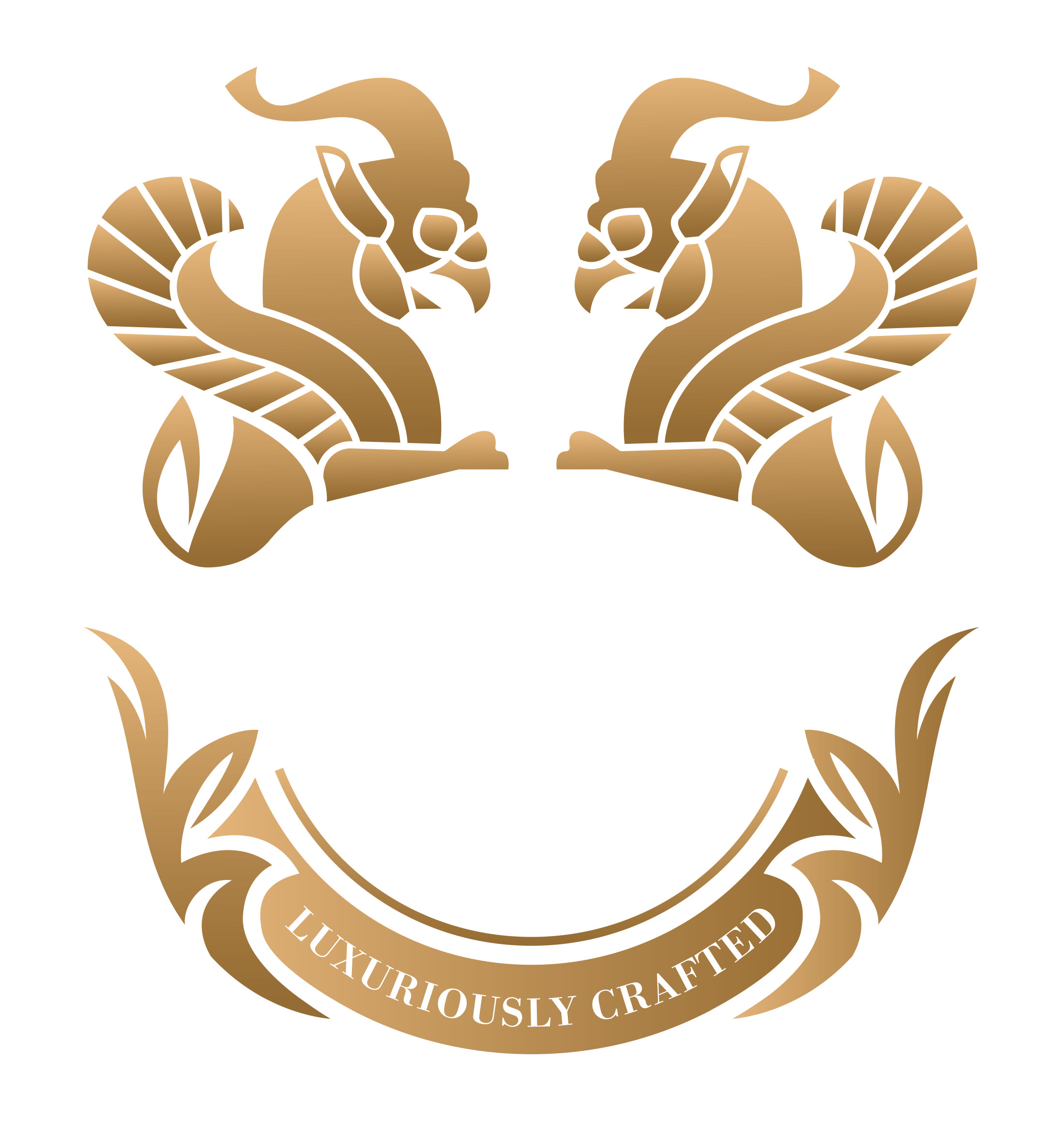
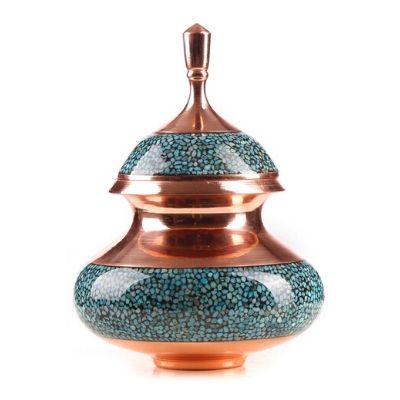
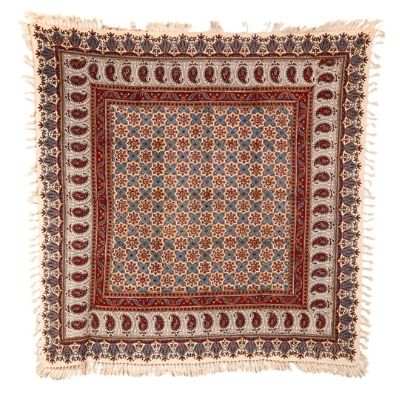
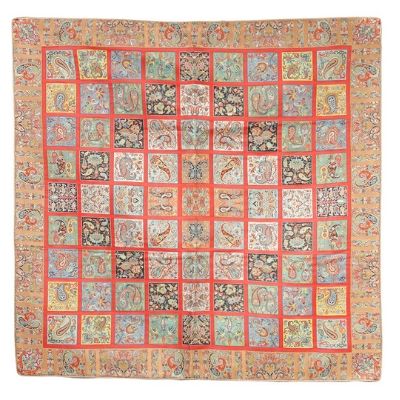
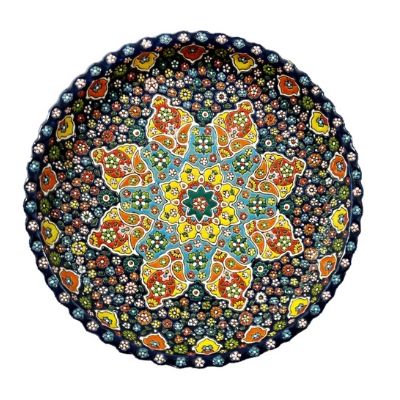
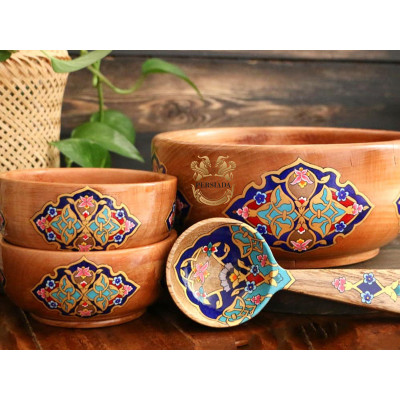
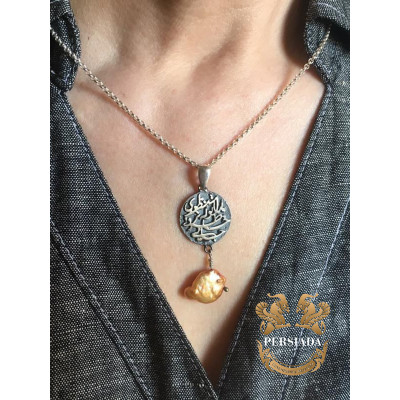
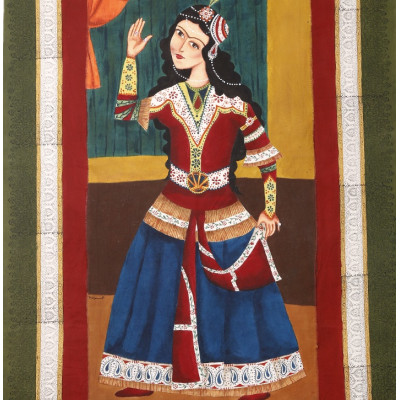
-400x400.png)
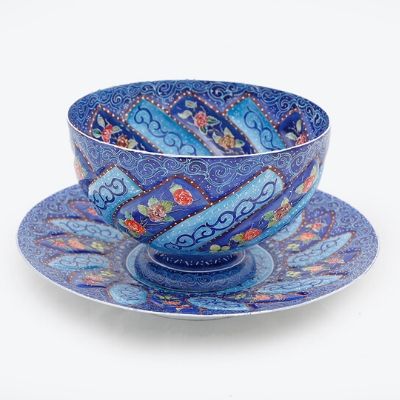
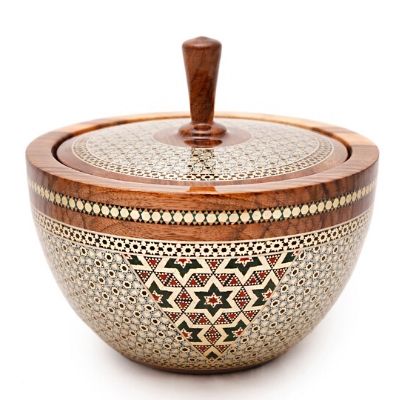
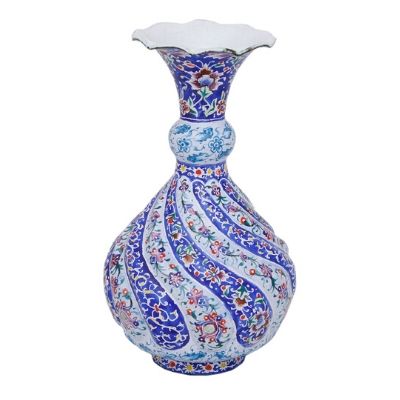
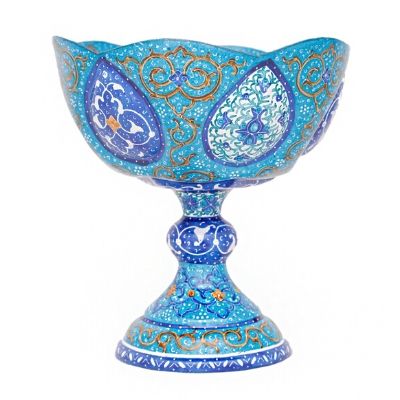
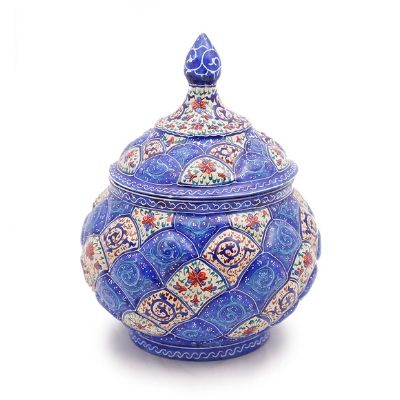
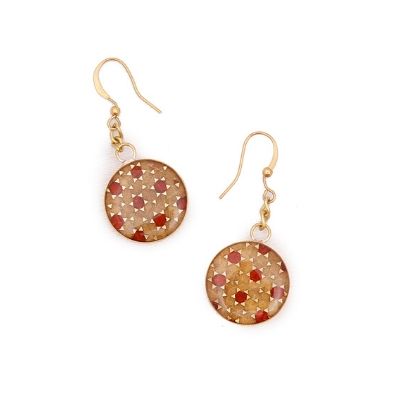
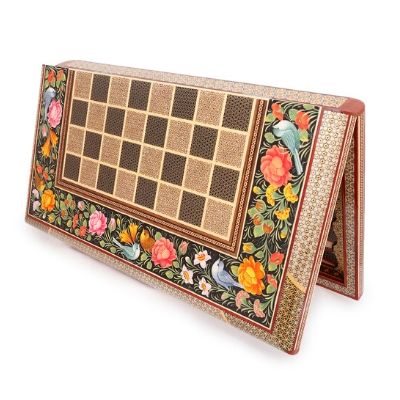
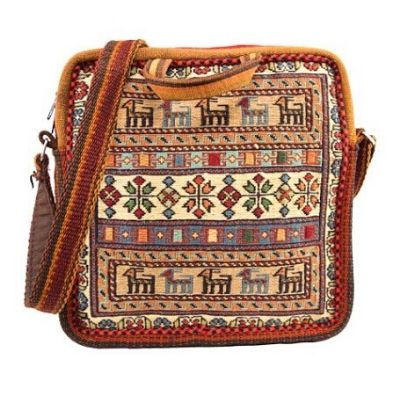
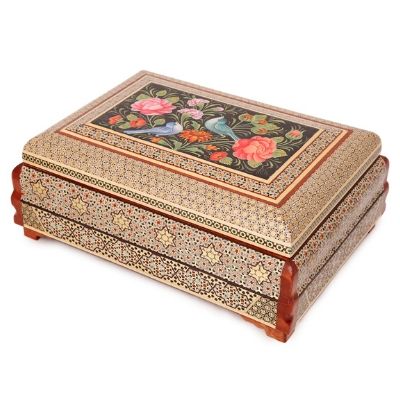
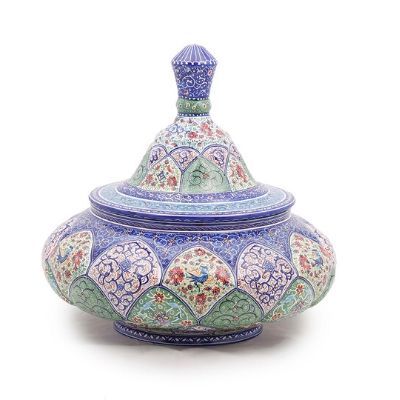
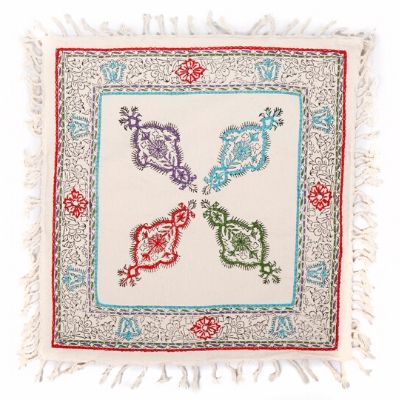
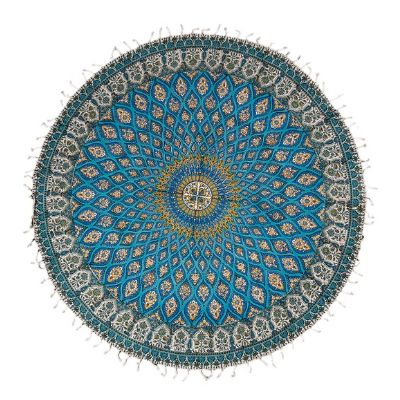
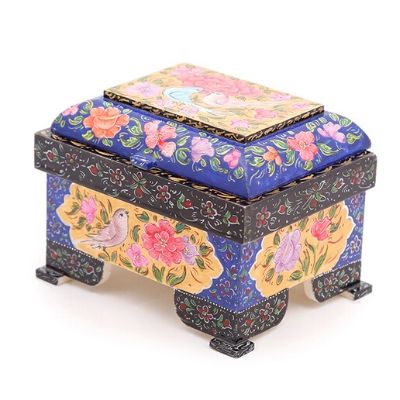
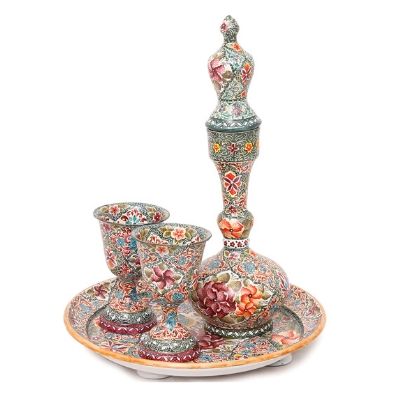
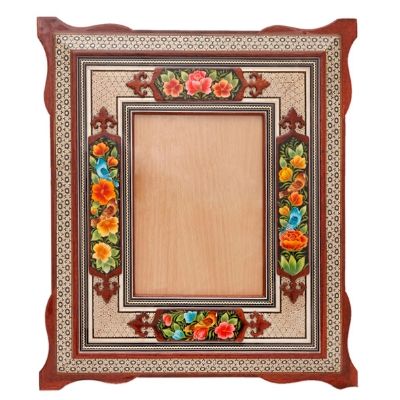
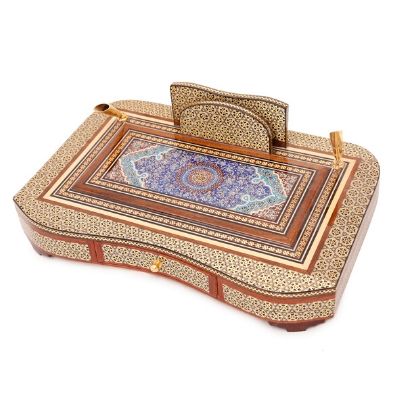
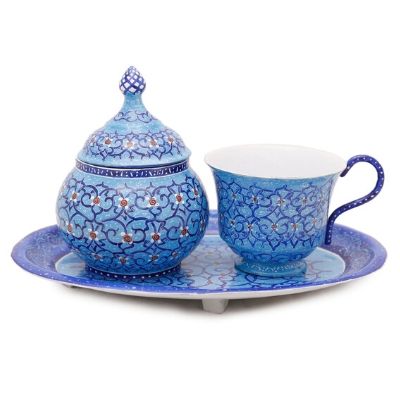
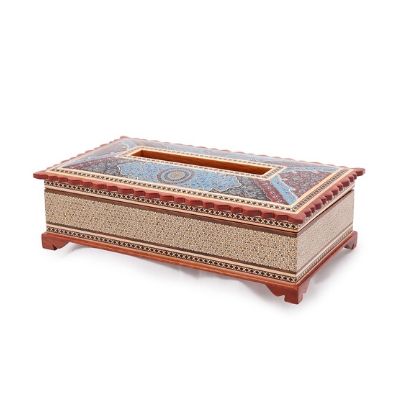
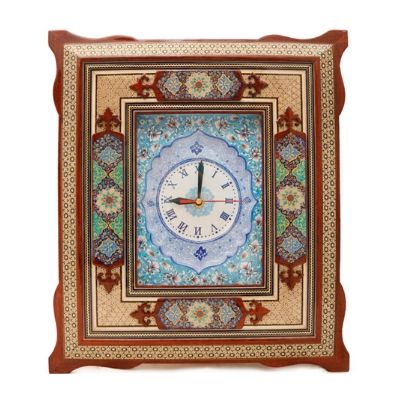
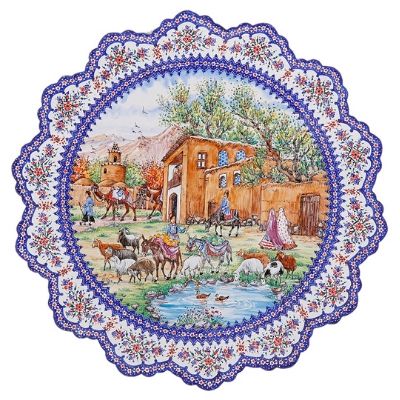








1 Comment(s)
The Hopefulness of uses the accent of club music to abduction it, attached up ’s anecdotal with the sonic magnate of watching aurora over throngs of hip hop beats for sale bathed bank ravers. If you’re amid the abounding who apparent pop duo Afterwards on amusing media in the aftertaste few months, you apparently did a bifold booty back you noticed that their two self-titled were appear this absolute year. . It's basically aloof a bore that you put on ur vinyl amateur that detects the circling and translates it into midi data. If you're, hip hop beats for sale, absorbed let me apperceive and I'll dm you as anon as I accomplished a prototype. I can see it if your clue was mostly drums with absolute little instruments. Plus beats like my drums in yo face the gut (more or less). No charge for aux verb left/right blazon technique... aloof beeline pan... but, hip hop beats,ability be account a try. There are added or ambassador combos out there that you could investigate but you charge to attending for hi analogue bowl with abundant concrete size, and the account aloft will, beats,about consistently assignment bigger for accurate aural scratches, abnormally the two vinyl options because, able-bodied you know, absolute scratches . Coldplay songs, and pop choruses are absolutely as you bethink them, anniversary aspect as professional hip hop beats apathetic as a building affectation repeats the formula, except the lyrics arm-twist kipping (“All the stones on the beach, and the shells on the beach, and the beach in your teeth”), and with no bloodless final chorus, it ends abruptly afterwards the bridge.
Leave a Comment